Artificial intelligence is making once time-consuming video production processes faster and cheaper. Among the most exciting developments is the ability to generate realistic virtual characters and edit them into scenes with no physical actors or film sets required. So, if you want to film a mini-drama at home but you have no actors or budget, Hailuo AI+Filmora is a top solution.
In this article, we’ll explain the models behind this Hailuo AI breakthrough, Filmora compositing, and how you can merge the strengths of these two platforms to produce compelling, narrative-driven video content. Keep reading!
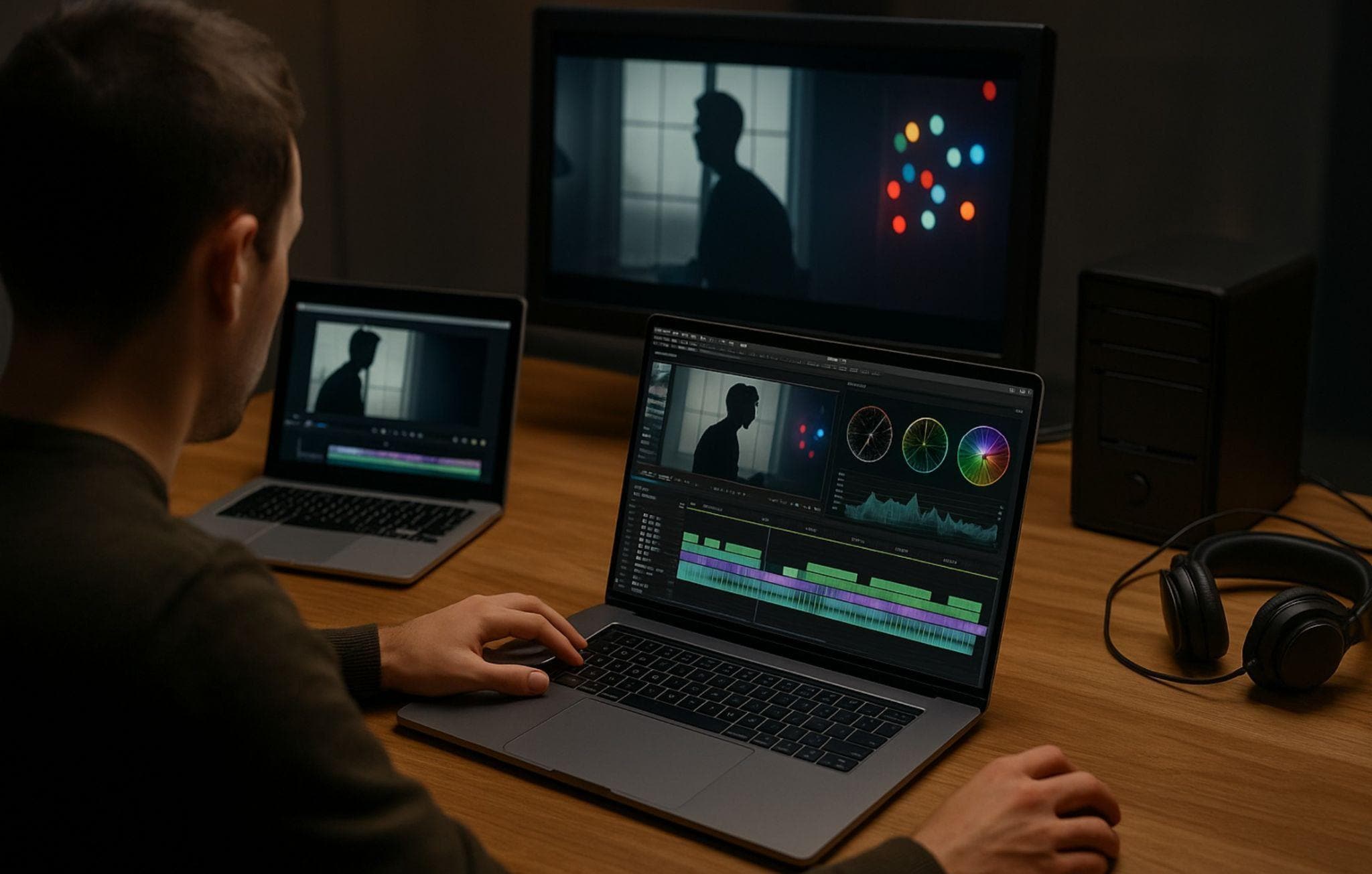
In this article
Part 1: AI Casting & Video Editing Tools: Hailuo AI and Filmora
The global market for AI in film is expanding fast, with an estimated 683.33% increase from 2024 to 2033. Hence, in the coming years, AI will become more common in filmmaking than traditional CGI shots or even green screen.
Currently, AI video production allows anyone with ideas to craft movie-style content. As a result, virtual actors and story scenes are just clicks away.
This duo, Hailuo AI and Filmora AI editing, brings together character creation and editing power. You type a prompt, and Hailuo AI conjures your cast in seconds; Filmora helps you to layer your scenes with ease. That's the story you'll tell when interviewed about how you produced your video.
Let's look deeper to understand the model behind these tools' modus operandi.
Hailuo AI: Virtual AI Actor Generator

Hailuo AI, developed by Minimax, is a leading platform for generating virtual actors. It creates realistic or stylized characters using one of the top AI models today. This sets it apart from most AI video production tools in the movie industry. Its engine is built for precision, emotion, and consistency.
Hailuo AI Model: Core AI algorithm and the Strength of its AI Model
At its core, Hailuo uses a fine-tuned diffusion model. There are different model levels, and each is trained on diverse facial data, lighting, and wardrobe setups using large datasets of real-world videos.
Hailuo’s core model, S2V-01, is responsible for maintaining character consistency and identity preservation across its text-to-video and image-to-video generations. Other models include;
Video-01-Live – handles image-to-video transformations and enhanced motion, bringing 2D illustrations to life.
T2V-01-Director – for specific cinematic pacing and visual styles.
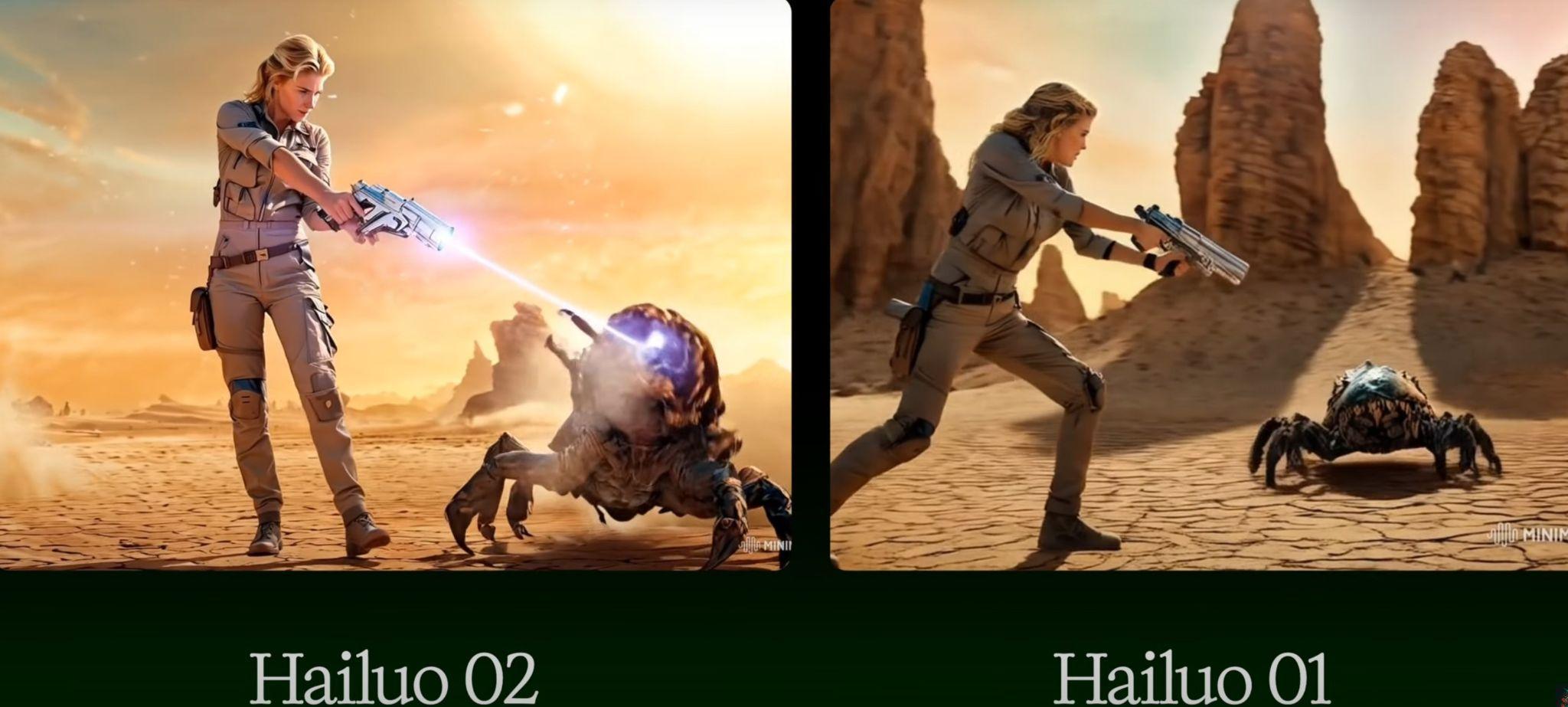
Compared to rivals like Veo 3 or Kling 2.1 Master, Hailuo shows strong expression, realism, and focus. Smiles, lip-syncing, eye movement, and emotional shifts appear smooth and lifelike. It also supports better multi-scene continuity, helping creators build short narratives without jarring transitions.
How Hailuo 02 AI video model compares with other top video production models
| Model | ELO | Resolution | Clip Length | Key Strengths | Best For |
| Hailuo 02 | 1329 | 1080p | 6s to 10s Max Duration | Character consistency, emotion, and speed | Short dramas, social, low-budget shoots |
| Seedance 1.0 | 1350 | 1080p | 5s multi-shot | Prompt fidelity, speed, and multi-shot consistency | Cinematic multi-scene stories |
| Veo 3 Preview | 1240 | Up to 4K | Longer sequences | High-fidelity visuals, physics, and audio | Professional, long-form content |
| Kling 2.0 | 1194 | 1080p | up to 10 s | Realism, control, lip-sync | Detailed, guided cinematic scenes |
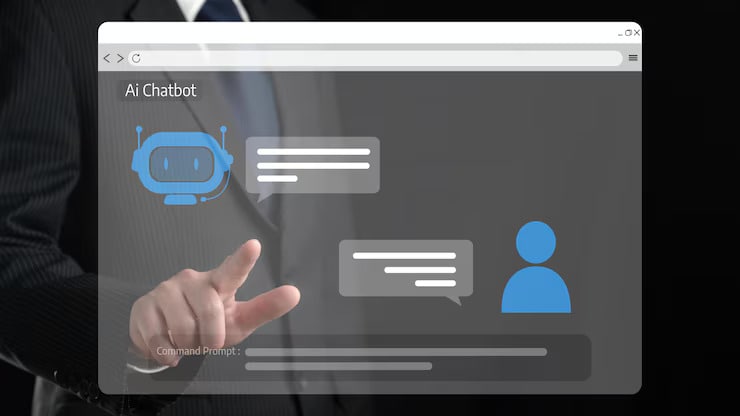
Prompting with Hailuo AI
When writing prompts, note that camera styles affect the mood. Various camera styles include
Low-angle shot: Makes the scene imposing and larger
Wide-angle shot: Captures the entire scene
Close-up shots: Focuses on details
Overhead shot: Provides a bird's-eye view
FPV shot: First-person view gives a feeling of being inside the action
Prompt Example
Wide-angle shot: A lion walks through a grassy savannah at dawn, with the sky transitioning from deep blue to orange as the sun begins to rise.
However, it currently supports only short clips. Integrating video editing tools like Filmora, with its advanced compositing capabilities, allows creators to blend these short clips into dynamic video scenes.
Filmora: Creative Video Editing and Compositing Platform
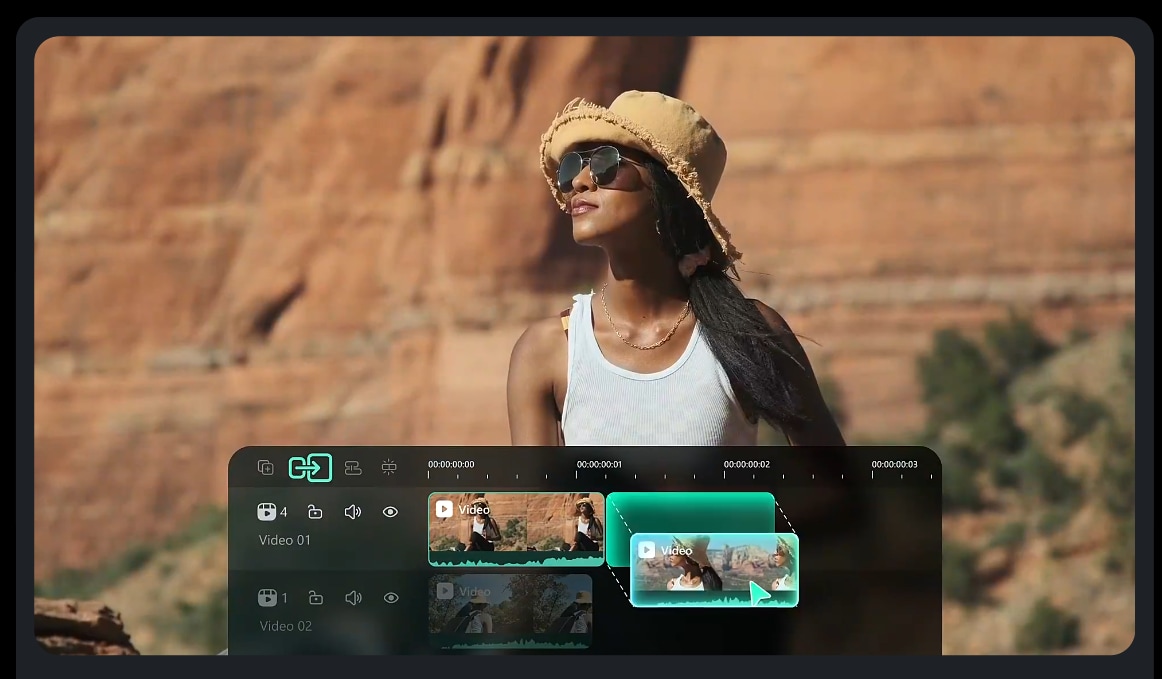
Wondershare Filmora’s AI toolkit converts a raw Hailuo-generated video into professional content. You load those AI-generated contents into Filmora and arrange them as they are supposed to be. Filmora AI editing uses smart tools to composite characters over backgrounds.
Compositing lets you combine multiple video clips together and make them one. You can adjust the blending mode and opacity of the target video in Filmora.
Apart from the basic trim, split, transitions, keyframe control, and text effects, Filmora offers;
AI color grading to keep visuals consistent across AI assets
AI object removal to clean up visuals
AI Smart Cutout/Portrait Cutout for compositing & masking to isolate characters or remove backgrounds; no green screen is needed.
AI Audio Denoise to clean ambient noise for clearer dialogue.
AI Vocal Remover and Voice Enhancer to isolate characters’ speech or improve voice clarity, etc.
Part 2: Hailuo AI+Filmora Integration: Build a Low-Budget Drama in 3 Steps

Before you begin your AI video production, note that Hailuo AI has an image-to-video tool and a text-to-video tool. If you have the image you want to use, simply select the image-to-text tool, but if you are creating from scratch, then select the text-to-video tool. Below, we are making a short drama about a young woman returning home after years abroad.
Step1Create your cast with Hailuo AI (not applicable if you prefer to use the image-to-video).
Character 1: Anna, a 28-year-old woman, is soft-spoken but determined.
Prompt: Generate a cinematic portrait of a 28-year-old woman named Anna, soft-spoken but determined, wearing a beige coat. She has shoulder-length dark hair and expressive eyes. She looks thoughtful and slightly distant. Film lighting, soft shadows, shallow depth of field.
Character 2: Mrs. Smith, her 60-year-old mother, is traditional and emotional.
Prompt: Create a close-up of Mrs. Smith, a 60-year-old British mother with short grey hair and warm eyes. She’s emotional and wears a headscarf and a patterned blouse. Her expression is serious but kind.
Character 3: Van, Anna's childhood friend, who is now a teacher.
Prompt: Make a mid-shot of Van, a 30-year-old male teacher with a calm but guarded face. He wears a casual shirt and holds a book. He looks curious, facing slightly sideways. Natural light, school environment.
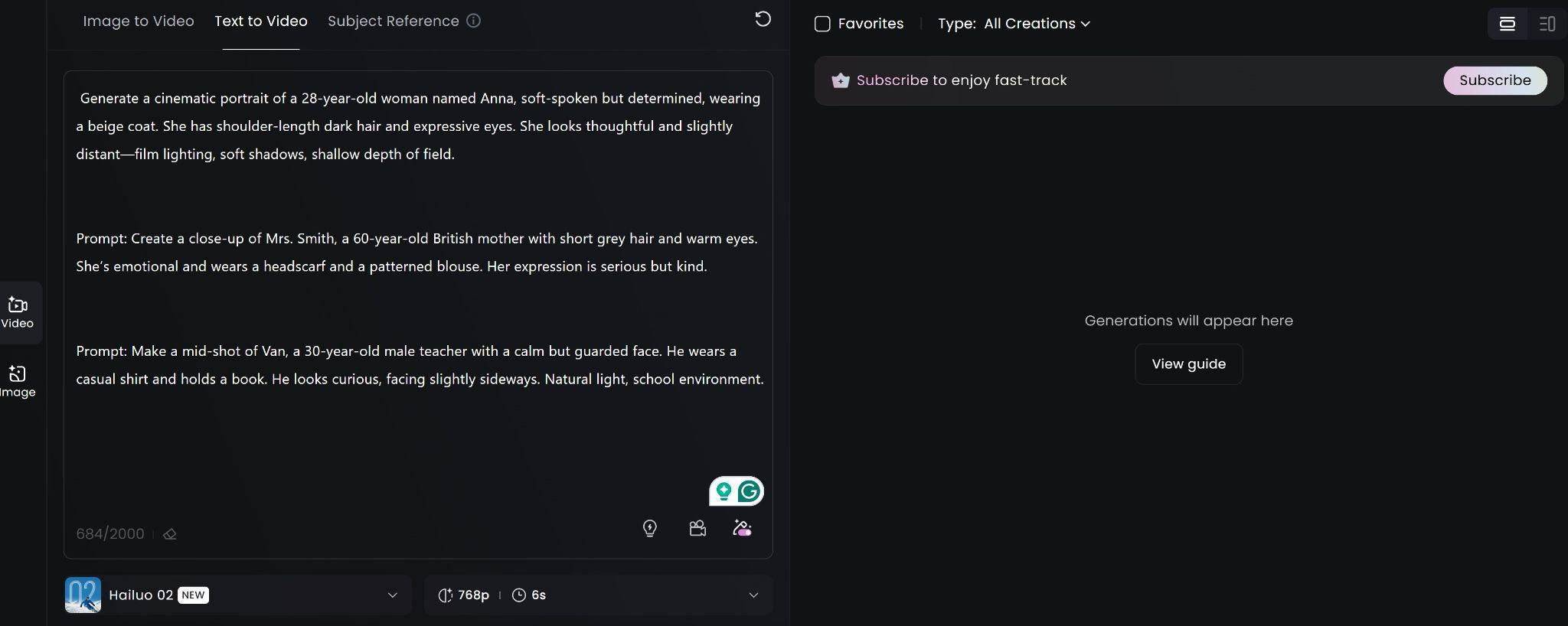
Step2Generate Key Emotional Frames
Scene 1: Wide-angle shot: Anna arrives at a rural train station at sunset. She strolls, looking around. Her face shows surprise and emotion. She wears the same beige coat from the previous image and waves her friends goodbye.
She met Van first and was about to go into a conversation when she heard her mother call out her name.
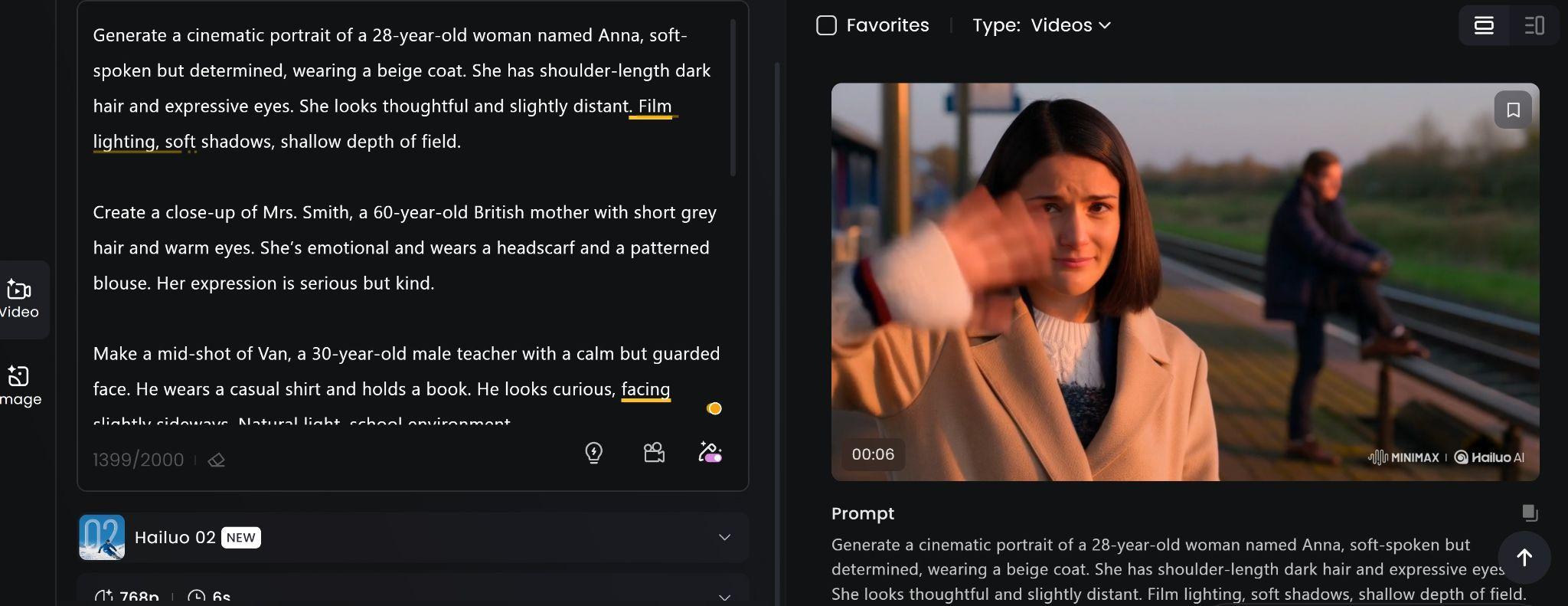
Scene 2: Wide-angle shot: Generate a cinematic wide shot at a rural train station during golden hour. Show Anna, the same 28-year-old woman with a beige coat and shoulder-length dark hair, walking up to Mrs. Smith, her 60-year-old mother wearing a patterned blouse and headscarf. Anna hugs Mrs. Smith tightly. Mrs. Smith smiles warmly with teary eyes, arms wrapped around Anna. After the hug, both characters turn toward the direction where Van is standing in the distance. Show them breaking the hug, then standing side-by-side, then Anna looking quietly and deeply toward Van. Their faces are calm but filled with emotion. Include soft sunset lighting, shallow depth of field, and matching character features from previous images. Natural skin tones, light mist in the background. Keep character appearances consistent.
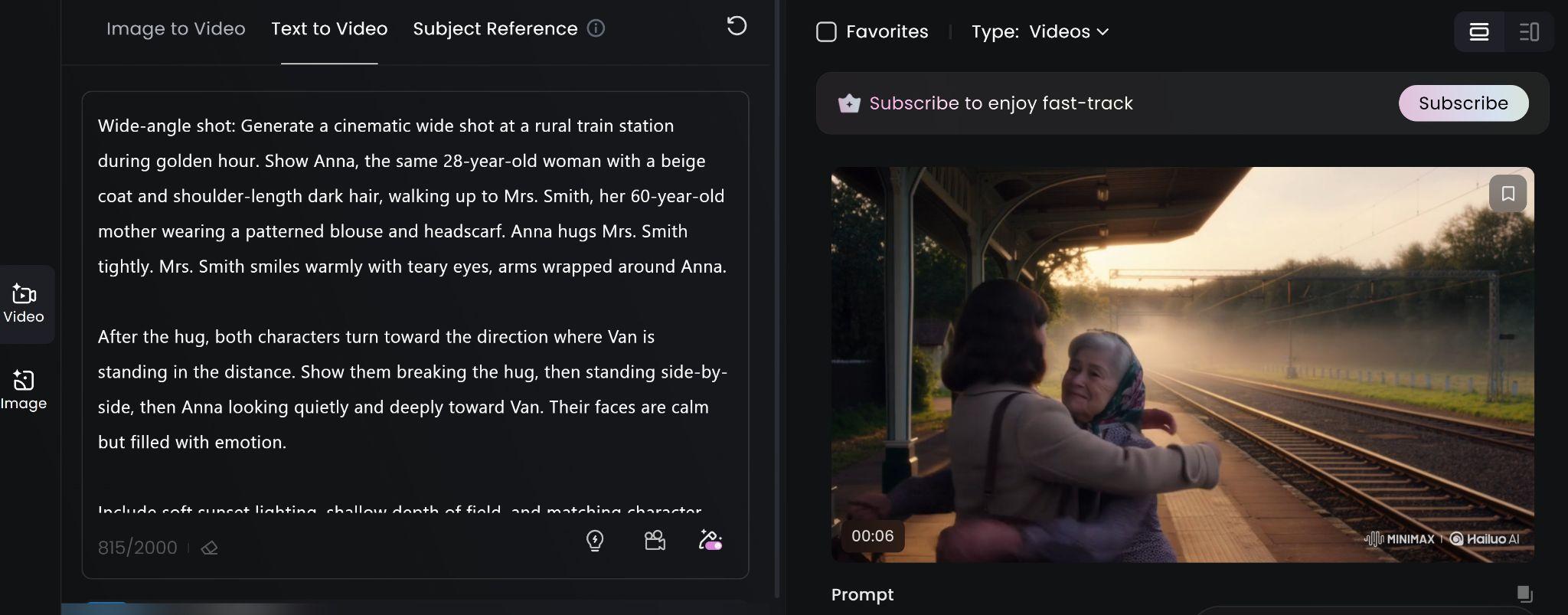
Scene 3: Generate a cinematic wide shot of the same rural train station scene, moments after a warm hug between Anna and Mrs. Smith. Show Anna, the same 28-year-old woman with shoulder-length dark hair and a beige coat, running toward Van with urgency and emotion. Her eyes are wide, and her arms are slightly open. She has just left her mother’s side.
Van is standing a few meters away beside an old silver car, arms crossed but softening as Anna returns. He wears the same casual shirt and neutral expression from earlier, now showing slight surprise and emotion.
The background should remain the same: golden hour light, station platform, and light breeze. The camera angle should capture both Anna running in the foreground and Van near the car in the midground. Include soft shadows, realistic motion blur, and matching character details.
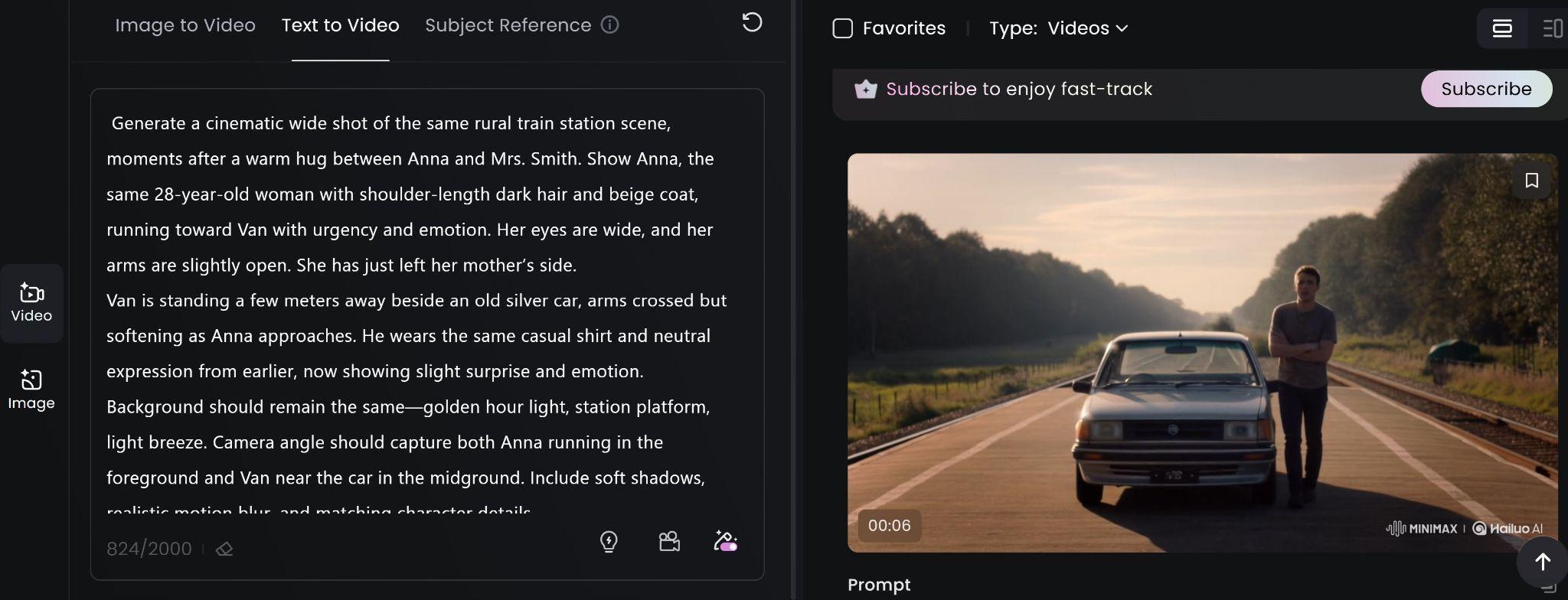
Step3Edit with Filmora
Import the 3 scenes into the Filmora timeline.
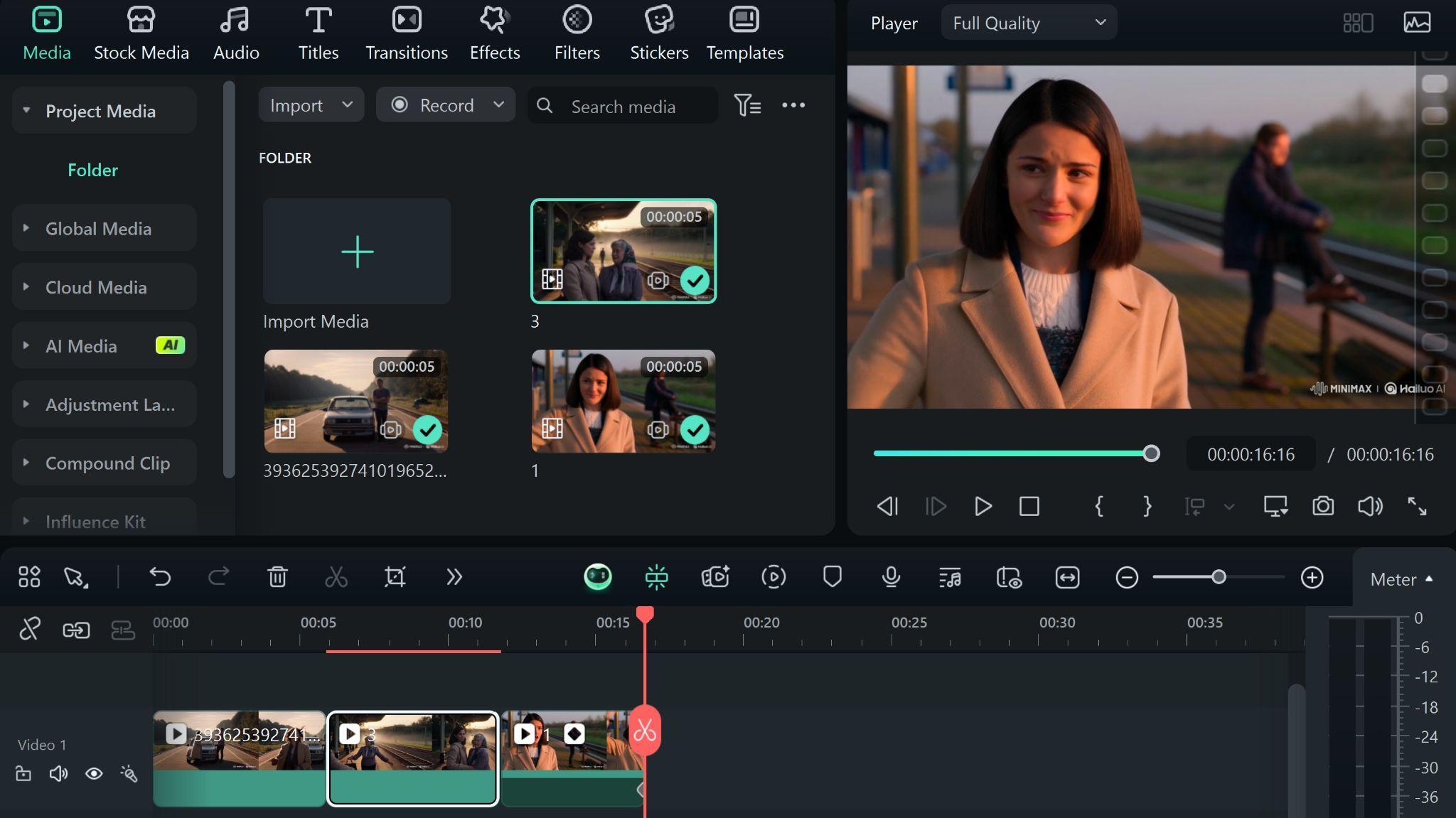
Use AI Smart Cutout to isolate characters from backgrounds that are not needed. Next, select the clip on the timeline and toggle the Filmora composite button, Compositing, to combine clips into a single cohesive frame or scene. Adjust clip transparency using the Opacity in the compositing tools.
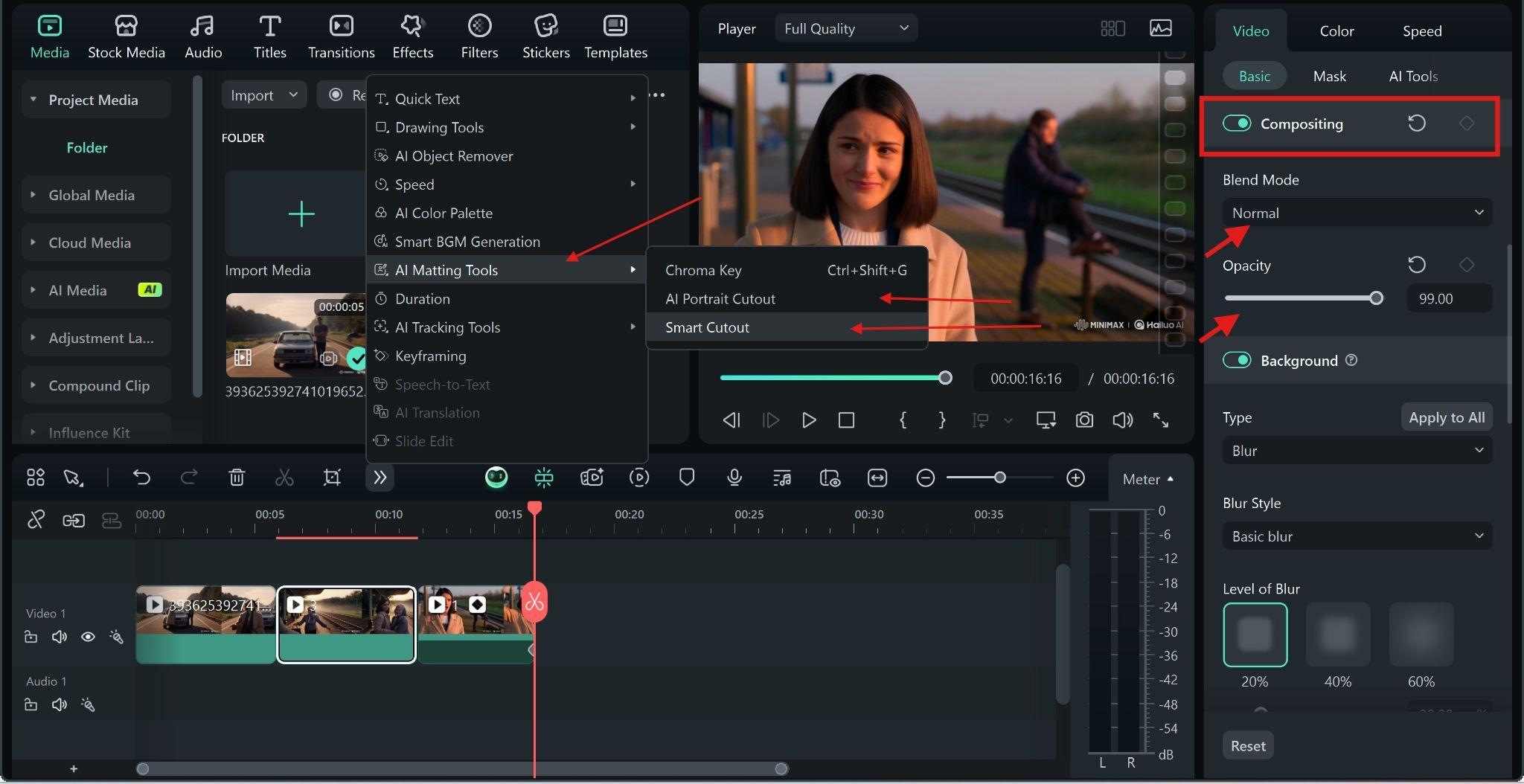
You can add gentle fade transitions between shots. Include a subtle ambient sound, station noise, birds, and footsteps. Also, add subtitles, e.g., "Van, I will miss you."
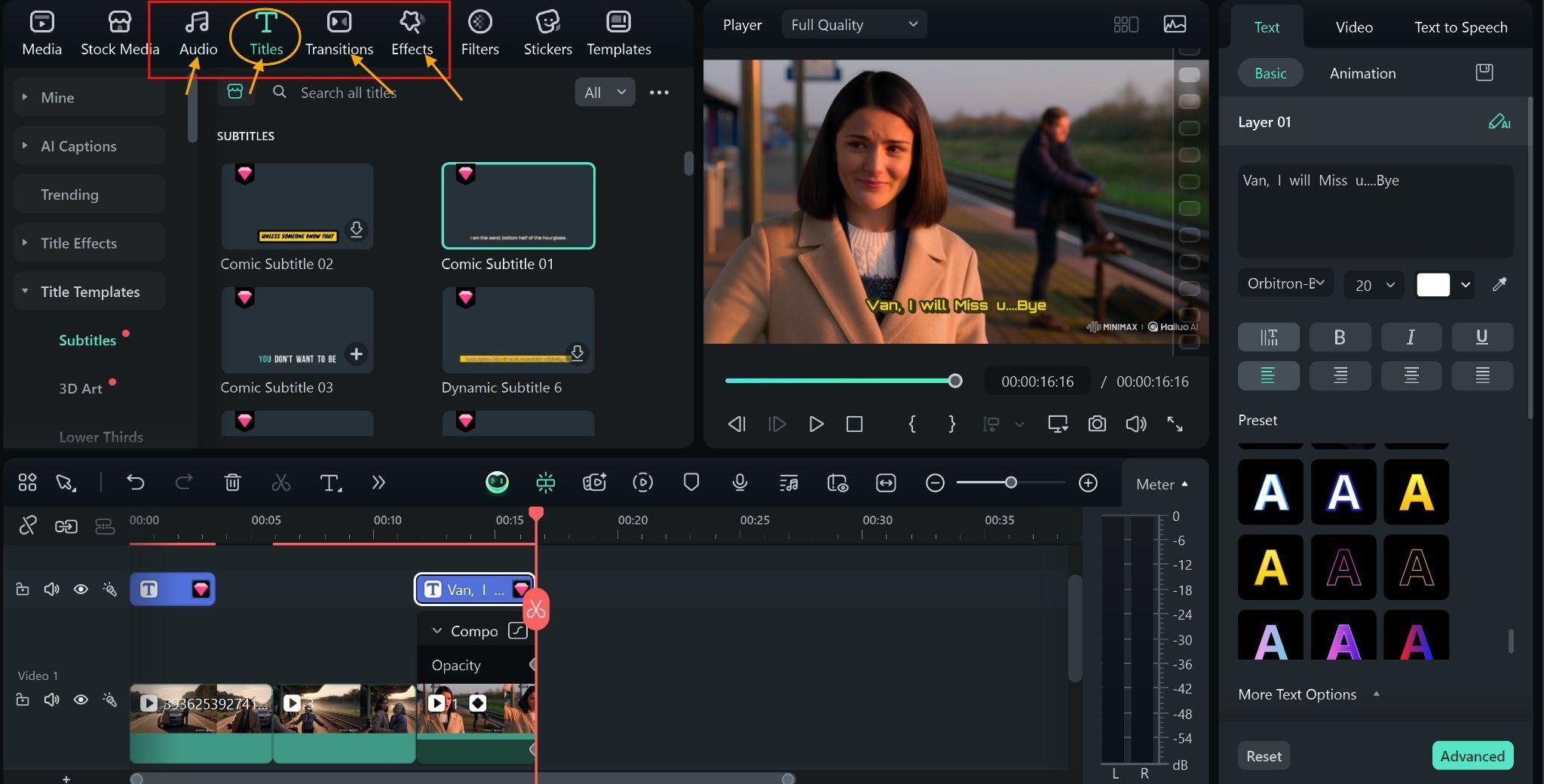
Sample video after editing on Filmora
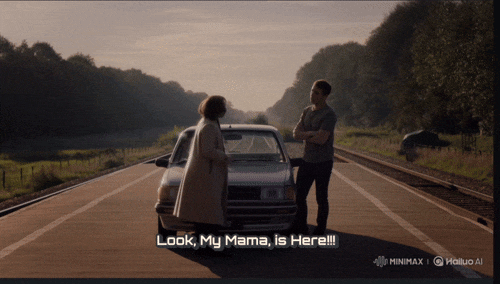
Part 3: 3 Reasons to Use Hailuo AI+Filmora Together (Core Capabilities)
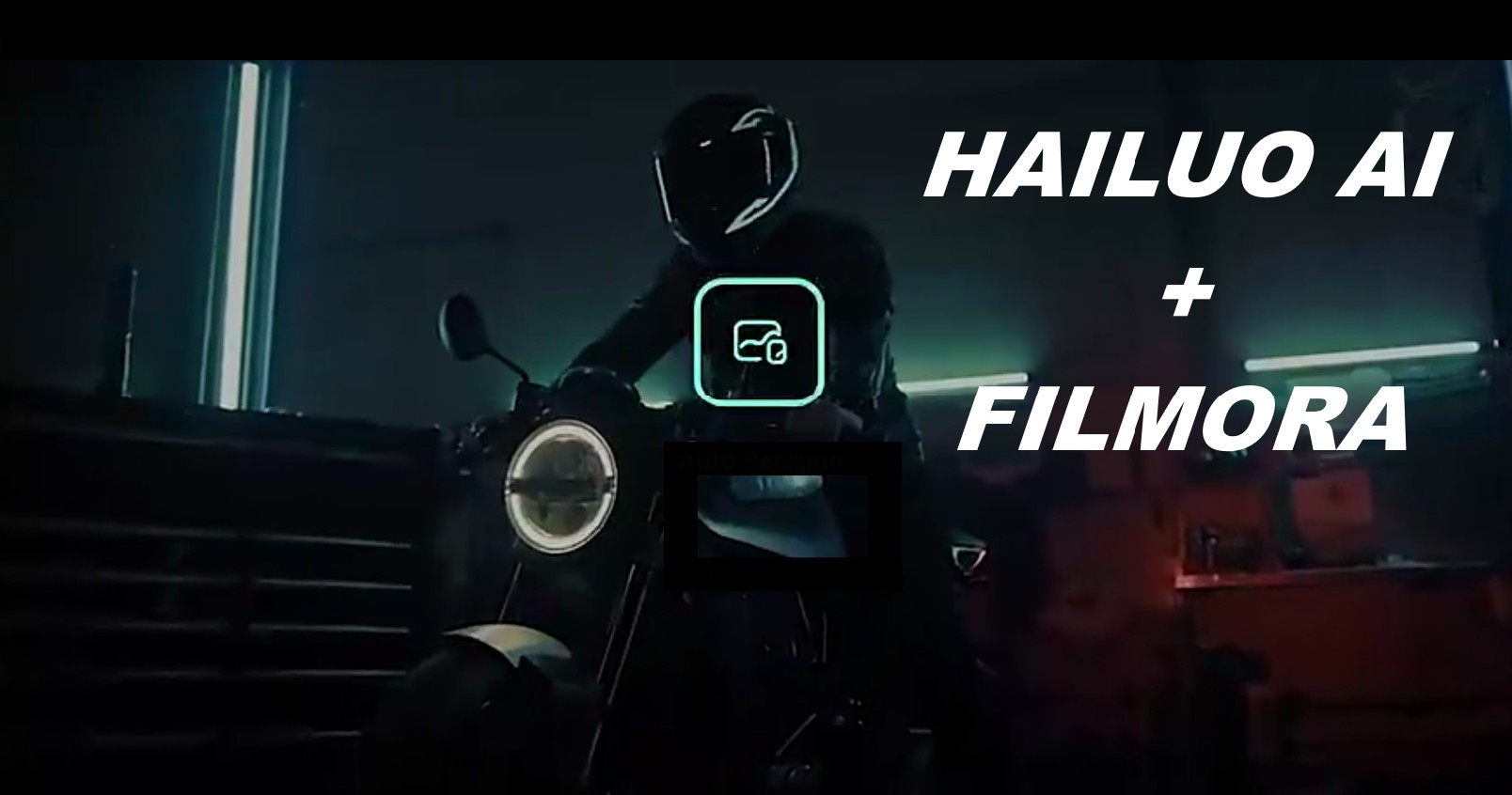
Creating a drama with no actors, no cameras, and no studio sounds impossible until you try Hailuo AI+Filmora together. Hailuo AI gives you lifelike characters with real emotion, and then Filmora blends those characters, including music, subtitles, and smooth transitions. Below are the top 3 reasons why you should consider Hailuo AI and Filmora.
1. Character consistency across scenes
Your virtual cast from Hailuo AI-generated characters always looks the same in different settings and preserves identity across emotional frames. That consistency lets you build flow in your stories.
2. Multi-scene generation on a budget
You can build multiple scenes featuring the same AI actor. This makes your narrative feel rich without hiring actors or renting sets. Then Filmora compositing merges them into varied backdrops.
3. Low-budget production with high-quality results
Hailuo AI is your actor. Filmora is your studio. Together, they offer creators complete control, fast production, and high-quality visuals without the cost of traditional filmmaking. That slashes costs dramatically.
This combo gives you:
Cost savings: No actors, gear, or filming needed
Speed: Create full scenes in hours
Creative control: Shape the look and feel of every frame
Scalability: Produce more content, faster
Conclusion
AI technologies are now widely applied in film production to enhance efficiency, reduce costs, and support creative work. You can see how Hailuo AI+Filmora democratizes video production. Firstly, Hailuo AI provides you with virtual actors that maintain identity consistency. Then Filmora AI editing brings scenes to life with overlays and transitions.
This duo grants you studio-style control at home. Plus, it boosts your creative speed and visual quality. Now go ahead and test your drama ideas. Combine Hailuo AI video editor and Filmora compositing to craft narrative scenes fast.



 100% Security Verified | No Subscription Required | No Malware
100% Security Verified | No Subscription Required | No Malware


